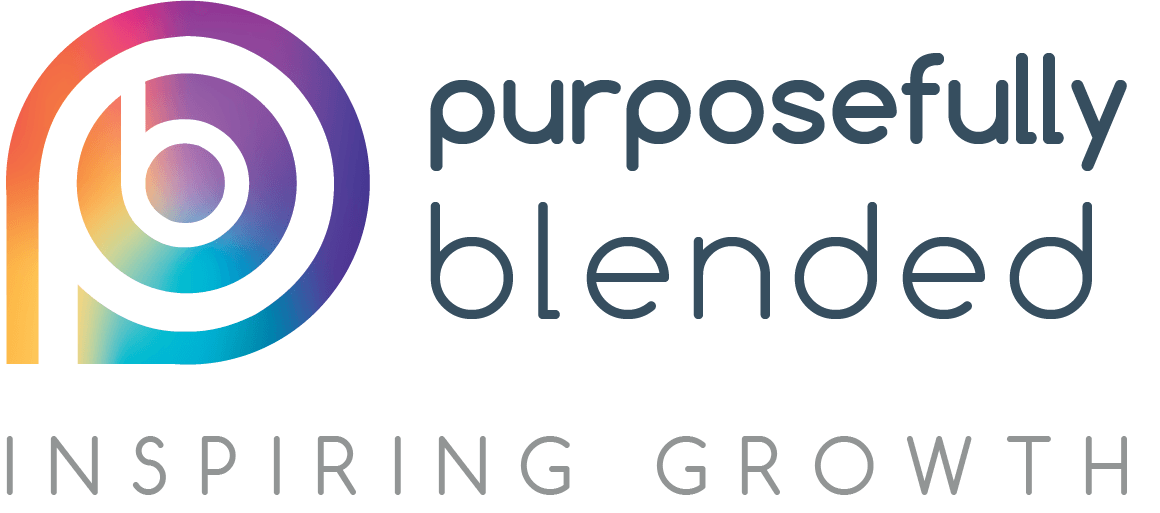Beyond Carrots and Sticks at Work - Decoding Your Team’s Motivational Blueprint
When employees underperform or disengage, the root cause often lies in mismatched motivators. Leaders who fail to understand what drives their teams risk creating environments of low morale, missed opportunities and high turnover.
Motivational Maps provide a science-backed framework that helps individuals understand themselves better and enables leaders to align individual drivers with organisational goals. These insights support both individual transformation and team effectiveness by fostering meaningful conversations, improving engagement and driving sustainable performance.
In this article, we explore the science behind
Motivational Maps, showcase a compelling case study and present actionable strategies for leaders to leverage motivation-driven leadership and impactful coaching.
The Engagement Crisis: Why Motivation Matters

Today’s workplace faces a critical engagement challenge. Employees who feel disconnected from their work are more likely to underperform, disengage or leave. The consequences of low motivation include:
- Lost productivity and innovation
- High turnover and recruitment expenses
- Declining customer satisfaction
- Reduced employee well-being
The root of the problem
Traditional leadership approaches often miss the mark by focusing on external incentives while ignoring intrinsic motivation. This leads to dangerous misalignment:
- Employees feeling misunderstood and frustrated
- Decreased collaboration and creativity
- Rising turnover rates
The solution lies in understanding individual motivators. Leaders need tools that provide clear insights into what drives their team members — moving beyond one-size-fits-all approaches to unlock genuine engagement and sustainable performance.
The Performance Triangle Model
To be clear, motivation does not operate in isolation—it is one of the
three pillars of high performance, alongside
Engagement and
Workplace Hygiene. But without sufficient motivation, even the most skilled employees with well-defined goals will struggle to perform at their best.
A Framework for Motivation-Driven Leadership
Motivational Maps provide a powerful framework for deepening self-awareness, helping individuals recognise their intrinsic drivers and understand what truly energises them at work: their ‘fire and purpose’. This heightened awareness is the foundation for both personal growth and team effectiveness.
Leaders can leverage Motivational Maps to decode motivation at both individual and team level, tailor their coaching approach and inspire high performance — translating abstract human energy into actionable strategies that drive engagement and results.
People can only meet you as deeply as they’ve met themselves.
Matt Kahn
Think of Motivational Maps as a ‘fuel gauge’ for your team.
- It not only shows how motivated your employees are, but also reveals what specific motivators drive their performance.
- Without this insight, leaders risk fueling their people with the wrong motivators (imagine putting the wrong fuel into your car), leading to disengagement and stagnation.
- Motivation is the fuel of performance, and when leaders understand what energises their teams, they can create high-performing, engaged workplaces.
At its core, motivation is dynamic and deeply personal, shaped by an individual’s values, experiences and evolving needs. Motivational Maps capture these nuances by identifying three primary clusters of motivators: Relationship, Achievement and Growth. Within these clusters lie the nine motivators that guide human behaviour:
1. Defender (security and predictability)
2. Friend (belonging and connection)
3. Star (recognition and esteem)
4. Builder (financial rewards and success)
5. Expert (mastery and learning)
6. Director (power and control)
7. Creator (innovation and originality)
8. Spirit (autonomy and freedom)
9. Searcher (purpose and significance)
Each individual’s Motivational Map is unique, shaped by their top motivators and how satisfied they are with them. This personal ‘treasure map’ gives leaders the insights needed to create environments where employees thrive.
Ref: Motivational Maps Ltd
How Motivational Maps work
Using a simple yet robust diagnostic tool, Motivational Maps assess:
- Each team member’s fire and purpose (their intrinsic motivators)
- Current motivation levels, identifying areas of alignment and disconnection
- Shifts in motivation, as drivers evolve over time
The results are visualised in an easy-to-read map that provides leaders with actionable insights. By tailoring rewards, communication and development opportunities to align with individual motivators, leaders can unlock higher engagement and productivity.
When you align your actions with your values, motivation stops being an effort and becomes a habit.
Anon
The Role of Motivational Maps in Impactful Coaching
Motivational Maps are not just diagnostic tools — they act as conversation enablers, helping leaders understand how to connect each team member with their fire and purpose. They seamlessly integrate with coaching models like GROW, particularly in clarifying the Goal and WHY for an individual.
- Goal (GROW Model) – What does success look like for you?
- WHY (Motivation) – What fuels your drive to achieve that goal?
When leaders use Motivational Maps in coaching, they create transformational, not transactional conversations — ensuring that employees feel
seen, heard and understood.
Motivation has an undeniable impact at every level of an organisation:
Individual performance: Motivated employees are 87% less likely to leave their jobs. They are invested in their work and their company, and they are more likely to stay with the company for the long term.
Team dynamics: Motivated teams experience less conflict, higher collaboration and greater innovation.
Company-wide: Companies with motivated employees are 21% more profitable.
Leaders who overlook motivation as a key driver of performance are essentially operating without a ‘fuel gauge’, risking misaligned goals, disengaged teams and diminished success.
Transforming Sales Team Engagement: A Case Study

A pharmaceutical company’s sales division faced declining engagement and rising turnover despite competitive compensation. Traditional solutions — increased incentives, team building and stricter performance management — failed to improve motivation or performance.
The division head, Martin, introduced Motivational Maps for leaders to use during their 1:1s to understand individual team members’ intrinsic drivers. For one struggling team, the assessment revealed three distinct motivational profiles:
- Stars: Driven by recognition and visibility
- Spirits: Craving autonomy and independence
- Searchers: Motivated by purpose and impact
The manager tailored her leadership approach to each profile:
- Created visibility opportunities for Stars through recognition programmes
- Granted Spirits more autonomy in achieving targets
- Connected Searchers’ work to the company’s mission and patient impact
Results
Within six months, the team saw:
- 40% increase in engagement scores
- 25% reduction in turnover
- Enhanced collaboration and innovation
- Improved team morale and satisfaction
This case study shows that success came from understanding and aligning with individual motivators rather than applying one-size-fits-all solutions. The manager’s targeted approach transformed a struggling team into a high-performing, engaged workforce without requiring significant financial investment.
People are born with intrinsic motivation, self-esteem, dignity, curiosity to learn, joy in learning
W. Edwards Deming
Leveraging Motivational Maps for Leadership Success

Motivational Maps are powerful for:
The ROI of Adopting a Coaching Approach
Gallup Data (Gallup’s 2024 State of the Global Workplace report.)
Only 33% of employees are engaged in the US: Gallup’s State of the Global Workplace report reveals that only 33% of U.S. employees are engaged at work. This means that two-thirds of the American workforce is either not engaged or actively disengaged.
85% of employees worldwide are not engaged: Globally, the situation is even more concerning. A staggering 85% of employees worldwide are either not engaged or actively disengaged, highlighting a significant global challenge in employee motivation and well-being.
Engaged teams show 21% greater profitability: Gallup’s research demonstrates that engaged teams outperform their disengaged counterparts in various key metrics. Notably, engaged teams exhibit 21% greater profitability, underscoring the strong link between employee engagement and organisational success.
Engaged employees have 41% lower absenteeism: Engaged employees are more likely to be present and productive. Gallup’s data shows that engaged employees have 41% lower absenteeism rates compared to their disengaged colleagues, leading to increased efficiency and reduced operational costs.
70% of team engagement can be attributed to the manager: Gallup’s research emphasises the critical role of managers in driving employee engagement. The data reveals that 70% of the variance in team engagement can be attributed to the manager, highlighting the importance of effective leadership and management practices in fostering a positive and engaging work environment.
Personalised strategy development
- Leaders can replace guesswork with data-driven insights to create tailored engagement strategies.
- Helps leaders identify misalignments and coach team members towards roles that energise them.
Enhancing team effectiveness
- Team-level mapping reveals collective motivators, improving collaboration.
- Helps leaders understand why some teams thrive while others struggle to align.
Strategic talent management
- Maps guide hiring, promotions and team composition, ensuring the right people are in the right roles.
- Provides insight into motivational fit for specific roles.
Sustainable results
- Engagement and productivity improve when employees feel their motivators are valued.
- Turnover decreases as individuals find roles that align with their intrinsic drivers.
Practical Steps to Get Started With Motivational Maps
Motivational Maps offer a straightforward yet transformative approach to uncovering and leveraging the intrinsic drivers of your team. To maximise their impact, follow these five practical steps:
1. Assess motivation levels
Begin by mapping individual and team motivators to understand what drives each employee. The process is simple:
- Have each team member complete a Motivational Map questionnaire, which takes only 15-20 minutes.
- Review the results, which identify their top motivators, areas of dissatisfaction, and overall motivation level.
For example, you may discover that one team member values autonomy (Spirit), while another thrives on recognition (Star). This clarity eliminates guesswork and creates a foundation for tailored engagement strategies.
2. Analyse and align motivators
Once motivators are identified, compare them to employees’ current roles and responsibilities:
- Are their motivators being met?
- Are there areas where alignment is lacking?
For instance:
- A Builder motivated by financial rewards may thrive in a sales role with clear targets and bonuses.
- A Searcher motivated by purpose might feel disconnected if their role lacks a clear link to the organisation’s mission.
Using this analysis, you can adjust tasks, rewards or communication strategies to ensure alignment.
3. Personalise communication and engagement
Adapt your communication style and engagement methods to resonate with individual motivators:
- Stars: Highlight opportunities for visibility and recognition in meetings or presentations.
- Defenders: Provide clear expectations and consistent feedback to create a sense of security.
- Creators: Encourage brainstorming sessions and innovation-focused projects to fuel their drive for originality.
By aligning communication with motivators, you will create a sense of trust and understanding that deepens engagement.
4. Create tailored action plans
Motivational Maps enable leaders to co-create actionable solutions. Use the insights from the maps to:
- Develop individualised performance plans, addressing specific motivators.
- Design team strategies, such as grouping complementary motivators for collaboration.
- Incorporate motivators into development plans, ensuring alignment with career growth opportunities
For example, an employee motivated by Expertise (Expert) might benefit from mentorship opportunities or training programmes, while a Friend may excel in collaborative, team-based initiatives.
5. Embed Motivational Maps into leadership practices
Here’s how:
- Use Motivational Maps during recruitment to assess candidate alignment with the role and team dynamics.
- Include motivators in regular performance reviews and appraisals to track changes and progress.
- Reassess motivators annually or during key transitions, such as promotions or organisational changes.
By embedding Motivational Maps into your leadership toolkit, you create a culture of continuous alignment and growth, ensuring your team remains motivated and high-performing over time.
Bonus: Leverage for team wide insights
Mapping motivators at the team level allows leaders to uncover collective strengths and areas for improvement:
- Identify motivator gaps that might hinder collaboration or innovation.
- Balance team dynamics by ensuring a mix of motivators across Relationship, Achievement, and Growth clusters.
- Build trust and understanding by sharing team motivator profiles and encouraging open discussions.
Human beings have an innate inner drive to be autonomous, self-determined, and connected to one another. And when that drive is liberated, people achieve more and live richer lives.
Daniel H. Pink
Impact Leadership is Motivation-Driven
Understanding what drives people is no longer optional — it’s essential.
Leaders who integrate Motivational Maps into coaching and leadership create teams that are motivated, aligned and high-performing.
Your leadership legacy isn’t built on one-size-fits-all strategies. It’s built on knowing what fuels your people — their fire and purpose — and coaching them towards fulfilment.
To find out how Motivational Maps can transform your leadership and team performance,
please contact us.
How's Your Organisation Faring?
Performing in a volatile, unstable, complex and ambiguous world warrants support from a trusted partner. Purposefully Blended continues to support global Learning and Development Partners with the capabilities or additional expert resource they need to identify, build and implement effective blended learning solutions consistently and at scale. We continue to equip First-Line Leaders with coaching capabilities that embed, apply and sustain the learning. When these two roles work in harmony, they have a dramatic, transformative impact on outcomes.
Interested in getting our help to drive performance in your organisation?
Lucy Philip, Purposefully Blended, Founder
Purposefully Blended founder Lucy Philip founded the company in 2015, out of a profound sense of mission and possibility.
A highly experienced leader, ICF certified coach and mentor to Learning Partners and Leaders, Lucy has witnessed firsthand the unique challenges and pressures faced by those in Learning and Development (L&D) and Leadership Roles.
Purposefully Blended
Purposefully Blended is a boutique Learning and Development Consultancy that blends learning design expertise with high-impact leadership practices to drive transformational change in both organisations and individuals.
Over the last decade the company has established a strong reputation for helping global organisations through tailored programmes that incorporate formal, informal and mentoring coaching approaches to learning.
We support and develop leaders at all levels to develop the confidence and skills around: Positive Intelligence (Strength of Mind), Emotional Intelligence (Depth of Heart) and Intrinsic Motivation (Purpose and Drive).









